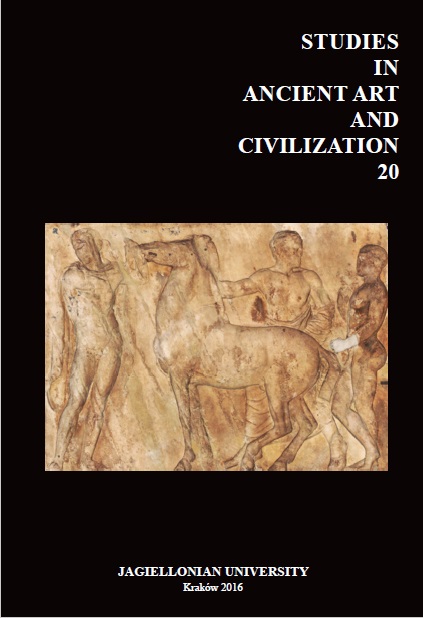Analysis of the Greek amphorae discovered in the barrow no. 7 at Crihana Veche (Republic of Moldova)
Analysis of the Greek amphorae discovered in the barrow no. 7 at Crihana Veche (Republic of Moldova)
Author(s): Ion Ceban, Natalia MateeviciSubject(s): History, Archaeology, Cultural history, Ancient World
Published by: KSIĘGARNIA AKADEMICKA Sp. z o.o.
Keywords: Barrow; amphorae; stamps; Thasos; magistrate; manufacturer
Summary/Abstract: The article presents an analysis of the amphora material from the excavation of grave no. 2 of the Scythian burial mound no. 7 near the village of Crihana Veche in the Republic of Moldova. In the burial mound of the local aristocrat, which was twice robbed in ancient times, along with the remnants of ornaments, weapons, and other objects used in the funeral ceremony, fragments of Greek amphorae were found (both in the burial and in the grave goods), which belonged to only one Greek center of production – Thasos. More than 27 Thasian amphorae in which expensive wine was brought in, as well as other ritual funerary objects, indicate that the man buried there had a special position in the local hierarchy. Also important for research are five amphora stamps on the handles of the Thasian amphorae, which confirm the dating of amphora fragments and indicate the exact sequence of activity of two Thasian magistrates, which previously did not have a basis of support. This funerary complex is singular for the fact that only Thasian amphorae of the same type were found in the burial (usually Heraclean amphorae were put in Scythian burials), which indicates the uniqueness of this complex in the territory between the Prut and Dniester Rivers, and the north-west Black Sea region as a whole.
Journal: Studies in Ancient Art and Civilization
- Issue Year: 2016
- Issue No: 20
- Page Range: 83-101
- Page Count: 19
- Language: English

